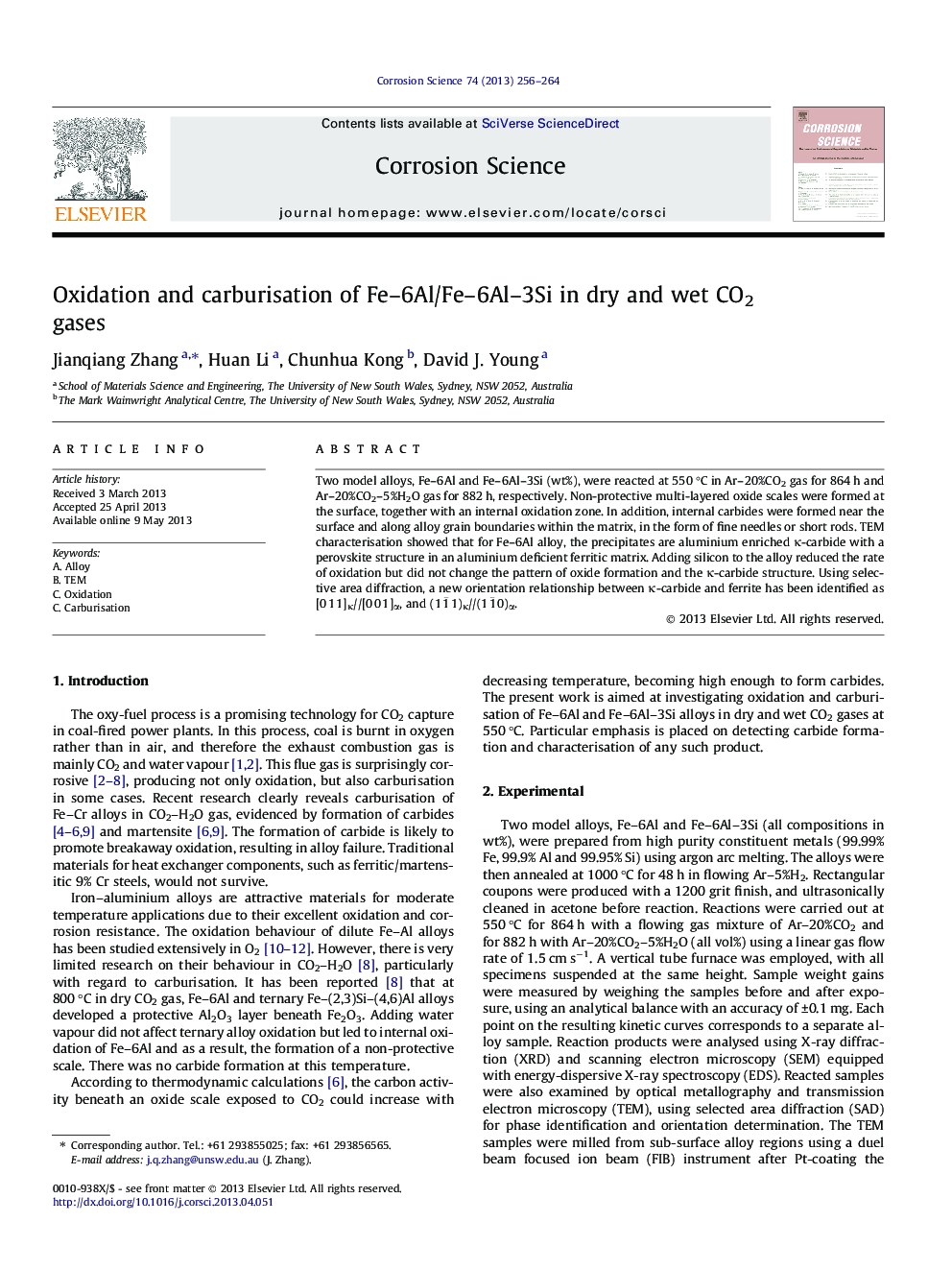| Article ID | Journal | Published Year | Pages | File Type |
|---|---|---|---|---|
| 1469149 | Corrosion Science | 2013 | 9 Pages |
•Non-protective multi-layered oxide scales are formed in dry/wet CO2 gas at 550 °C.•A CO2–(H2O) gas can carburise Fe–6Al–(3Si) alloys, forming κ-carbide.•A new orientation relationship between κ-carbide and ferrite has been identified.
Two model alloys, Fe–6Al and Fe–6Al–3Si (wt%), were reacted at 550 °C in Ar–20%CO2 gas for 864 h and Ar–20%CO2–5%H2O gas for 882 h, respectively. Non-protective multi-layered oxide scales were formed at the surface, together with an internal oxidation zone. In addition, internal carbides were formed near the surface and along alloy grain boundaries within the matrix, in the form of fine needles or short rods. TEM characterisation showed that for Fe–6Al alloy, the precipitates are aluminium enriched κ-carbide with a perovskite structure in an aluminium deficient ferritic matrix. Adding silicon to the alloy reduced the rate of oxidation but did not change the pattern of oxide formation and the κ-carbide structure. Using selective area diffraction, a new orientation relationship between κ-carbide and ferrite has been identified as [0 1 1]κ//[0 0 1]α, and (1 1¯ 1)κ//(1 1¯ 0)α.
